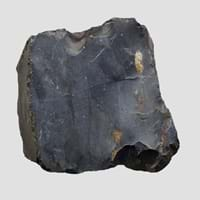Definition
Chert is a hard, dark, opaque sedimentary rock which is composed of silica with an amorphous fine-grained texture
Oolite is a sedimentary rock formed from ooids, spherical grains which are composed of concentric layers of calcite
Discoverer
Unknown
Unknown
Etymology
From flint-like quartz, 1670s, of unknown origin- a local term, which has been taken into geological use
From oo- + -lite, after German Oolit. A rock consisting of fine grains of carbonate of lime
Class
Sedimentary Rocks
Sedimentary Rocks
Sub-Class
Durable Rock, Hard Rock
Durable Rock, Medium Hardness Rock
Group
Not Applicable
Volcanic
Other Categories
Fine Grained Rock, Opaque Rock
Fine Grained Rock, Opaque Rock
Texture
Banded, Rough
Clastic or Non-Clastic
Color
Black, Brown, Green, Grey, Red, White
Black, Blue, Brown, Cream, Green, Grey, Pink, Red, Silver, White, Yellow
Durability
Durable
Durable
Scratch Resistant
Yes
Yes
Appearance
Glassy or Pearly
Rounded and Rough
Interior Uses
Decorative Aggregates, Homes
Decorative Aggregates, Flooring, Interior Decoration
Exterior Uses
As Building Stone, As Facing Stone, Garden Decoration, Office Buildings
As Building Stone, As Facing Stone, Garden Decoration, Paving Stone
Other Architectural Uses
Curbing
Not Yet Used
Construction Industry
Arrowheads, Construction Aggregate, Cutting Tool, Spear Points
Cement Manufacture, Cobblestones, Landscaping
Medical Industry
Not Yet Used
Not Yet Used
Antiquity Uses
Artifacts, Monuments
Artifacts
Commercial Uses
Creating Artwork, Gemstone, In fire-starting tools, Jewelry, To ignite fire, Used in flintlock firearms
Creating Artwork, Jewelry, Used in aquariums
Types
Flint, Jasper, Radiolarite, Common Chert, Chalcedony, Agate, Onyx, Opal, Magadi-type Chert, Porcelanite, Siliceous Sinter
Not Available
Features
Clasts are smooth to touch, Easily splits into thin plates, Has High structural resistance against erosion and climate
Available in lots of colors, Generally rough to touch, Very fine grained rock
Archaeological Significance
Monuments
Used
Not Yet Used
Famous Monuments
Data Not Available
Not Applicable
Sculpture
Not Yet Used
Not Yet Used
Famous Sculptures
Not Applicable
Not Applicable
Pictographs
Not Used
Used
Petroglyphs
Not Used
Used
Figurines
Not Yet Used
Not Yet Used
Formation
Chert forms when microcrystals of silicon dioxide grow within soft sediments that become limestone or chalk. The chert formation can be either of chemical or biological origin.
Oolites form when layers of calcite are deposited around a sand grain or fossil piece and are rolled around in calm water, which makes them round.
Mineral Content
Quartz, Silicon
Calcite, Chert, Clay, Dolomite, Quartz, Sand, Silt
Compound Content
Silicon Dioxide
Aluminium Oxide, Ca, NaCl, CaO, Iron(III) Oxide, FeO, MgO
Types of Metamorphism
Not Applicable
Not Applicable
Types of Weathering
Not Applicable
Biological Weathering, Chemical Weathering, Mechanical Weathering
Types of Erosion
Chemical Erosion
Chemical Erosion, Coastal Erosion
Grain Size
Very fine-grained
Fine Grained
Fracture
Uneven, Splintery or Conchoidal
Conchoidal
Porosity
Highly Porous
Less Porous
Luster
Waxy and Dull
Pearly to Shiny
Compressive Strength
Not Available
Cleavage
Non-Existent
Non-Existent
Specific Gravity
2.5-2.8
Not Available
Transparency
Translucent to Opaque
Opaque
Density
2.7 g/cm3
Not Available
Specific Heat Capacity
Not Available
Resistance
Heat Resistant, Impact Resistant, Pressure Resistant, Wear Resistant
Heat Resistant, Wear Resistant
Deposits in Eastern Continents
Asia
China, India, Iran, Japan, Oman, Russia, Saudi Arabia, Taiwan, Thailand, Vietnam
Brunei, India, Indonesia, Malaysia, Singapore, Thailand, Vietnam
Africa
Kenya, Morocco, South Africa, Tanzania
Cameroon, Chad, Ghana, Kenya, Malawi, Sudan, Tanzania, Togo, Zambia, Zimbabwe
Europe
Austria, France, Greece, Italy, Malta, Poland, Portugal, Serbia, Spain, Sweden, United Kingdom
United Kingdom
Others
Greenland, Mid-Atlantic Ridge
Not Yet Found
Deposits in Western Continents
North America
Canada, Mexico, USA
USA
South America
Bolivia, Brazil
Colombia
Deposits in Oceania Continent
Australia
New South Wales, Queensland, South Australia, Western Australia
Adelaide, New Zealand, Queensland, Tonga, Victoria, Yorke Peninsula
All about Chert and Oolite Properties
Know all about Chert and Oolite properties here. All properties of rocks are important as they define the type of rock and its application. Chert and Oolite belong to Sedimentary Rocks.Texture of Chert is Banded, Rough whereas that of Oolite is Clastic or Non-Clastic. Chert appears Glassy or Pearly and Oolite appears Rounded and Rough. The luster of Chert is waxy and dull while that of Oolite is pearly to shiny. Chert is available in black, brown, green, grey, red, white colors whereas Oolite is available in black, blue, brown, cream, green, grey, pink, red, silver, white, yellow colors. The commercial uses of Chert are creating artwork, gemstone, in fire-starting tools, jewelry, to ignite fire, used in flintlock firearms and that of Oolite are creating artwork, jewelry, used in aquariums.










